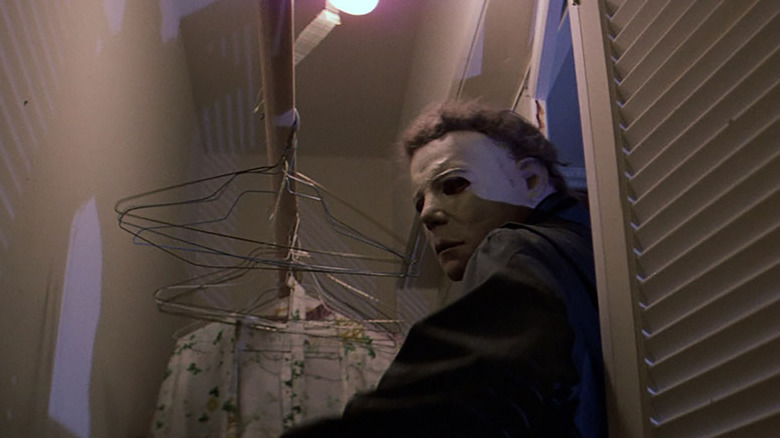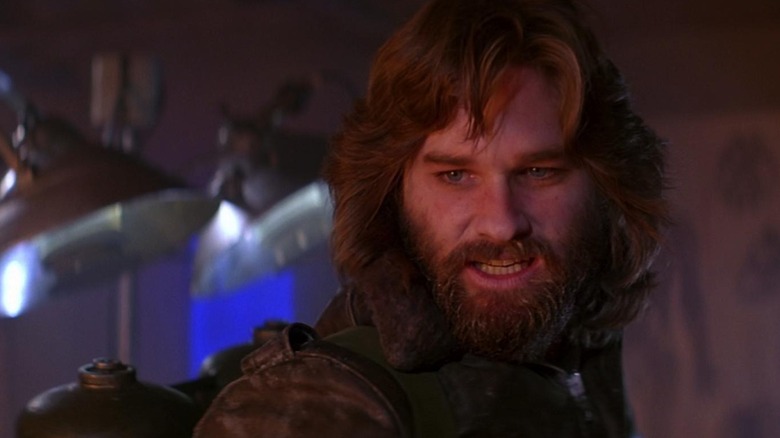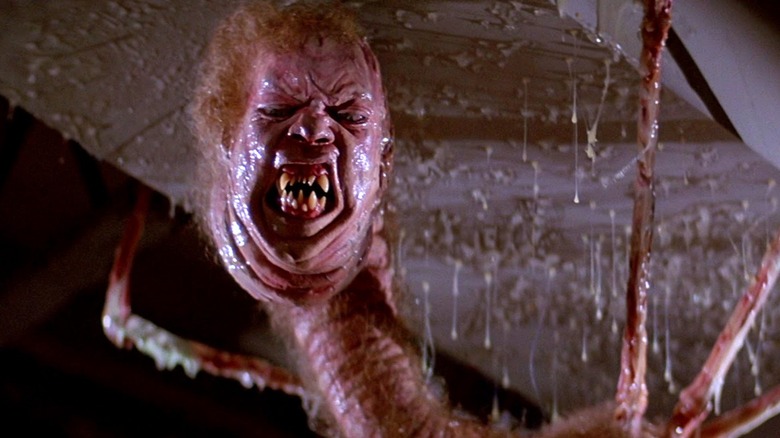The Iconic Horror Movie That Almost Killed John Carpenter's Career
Nowadays, people pretty much universally recognize John Carpenter for his genius as a writer, director, and composer, but back in 1982, things were a little bit different. The director had already truly impressed people with the 1978 slasher masterpiece "Halloween," along with the terrific but less-beloved "Assault on Precinct 13" and "The Fog," but unfortunately his big movie after the moderately successful "Escape From New York" was ultimately a massive flop.
That movie was "The Thing," which has at least come to be appreciated for its brilliance with time, going on to spawn a sort of confounding prequel/remake in 2011 and inspiring countless spoofs and references in everything from "The X-Files" to James Gunn's "Slither." It's truly difficult to imagine a time in which "The Thing" wasn't celebrated as a fantastic work of horror and science-fiction, forcing viewers to contend with Cold War paranoia about the danger of anyone being your enemy while also delivering some seriously scary special effects, but apparently audiences just weren't ready for it back in the early 80s. In an interview with Variety, Carpenter shared a quick history of his filmography, and revealed that getting a job after "The Thing" was almost as impossible as figuring out whether MacReady (Kurt Russell) or Childs (Keith David) was the Thing at the end of the film.
The Thing almost killed Carpenter's career
In the interview, Carpenter explained why he thought "The Thing" initially did so poorly with critics and audiences:
"'The Thing' was a bomb. Fans hated it, critics hated it. They thought I showed them too much of the monster. You just don't do that. Only if you're a low-rent director, like me, do you show the monster. You're supposed to hide it in the shadows. I needed a job after 'The Thing' because nobody would hire me. So ['Christine'] came along and I took the job, and it turned out better than it had any right to."
While there are definitely times when hiding the monster in the shadows is the scarier decision to make, Carpenter did right by "The Thing" by showing the horror in all of its goopy, gory glory. His version of "The Thing From Another World," which he had initially been hesitant to remake, was a story about mistrust and paranoia. It wasn't necessarily the monsters themselves that were the nightmare, but not knowing which of your friends might actually be a monster in waiting. The shocking moments when people and animals turn into mutated Things are just some extra fun to break up the tense drama happening between the survivors as they try and determine how to stop this unknowable alien invasion.
Unlike Carpenter, however, Russell has blamed the film's box office failure on aliens — to be specific, one particular alien who's really into Reese's Pieces.
E.T. vs The Thing
Carpenter might attribute the woes of "The Thing" to breaking some imagined horror rules, but Russell is a bit more pragmatic, telling Esquire in 2015 that he thinks it had more to do with the film hitting theaters just two weeks after the lovable blockbuster "E.T. the Extra-Terrestrial." He felt that the tonal difference between the two kinds of alien stories, combined with the paranoid misery of "The Thing," was probably just too much for those early audiences. "It came out the same year as 'E.T.' and we had an alien most of the audience couldn't watch! It was just a story of paranoia, extremely well handled by a master," he explained. He's definitely onto something, as "The Thing" is relentlessly bleak and audiences had plenty of other, easier to stomach fare at the theaters in 1982.
Thankfully, in the year 2024, "The Thing" is well-respected as a cinematic achievement and people have come around to understanding just how much it has to say about the human condition, our deepest fears, and how we will turn on one another in a flash given the right circumstances. It also has some of the nastiest practical visual effects in cinema history, making for a truly one-of-a-kind horror experience.


